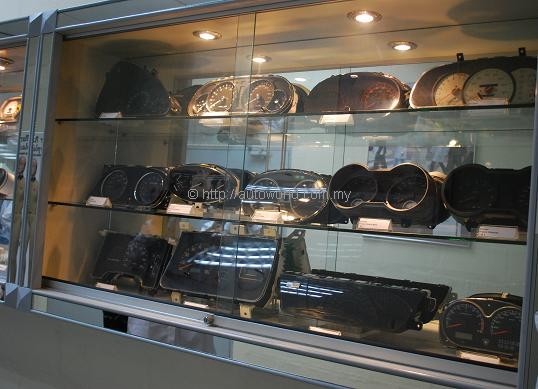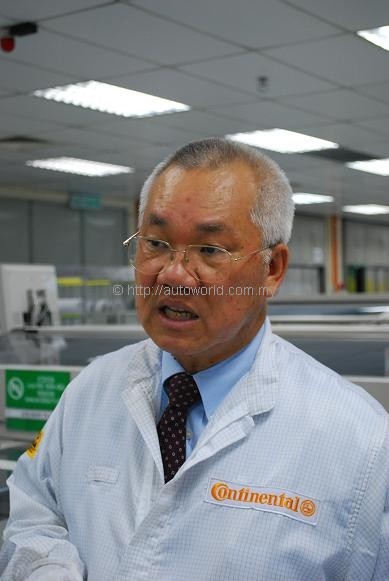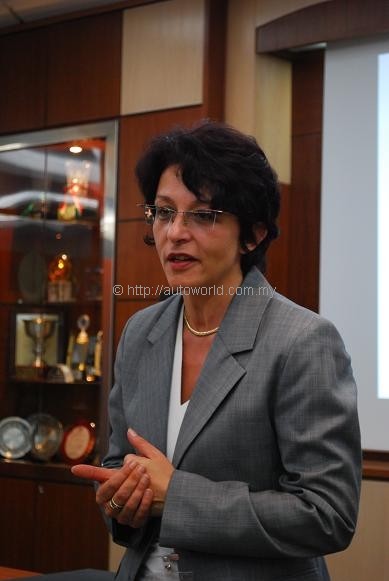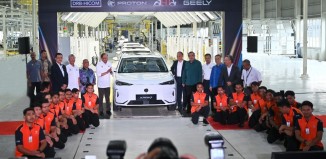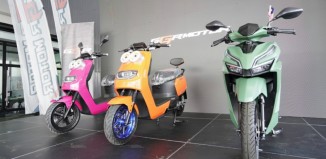A look into the Continental Automotive Group
Most car enthusiasts would have more than a passing familiarity with the Continental brand and its products. The Continental SportContact and ComfortContact series of tyres are very widely used among cars of all ranges and sizes. However, for most of us, our knowledge of Continental’s products stop there.
Here are the simple facts. Continental Corporation’s worldwide sales in 2008 exceeded €24 billion. In Asia alone, Continental boasts a total of 41 manufacturing locations hiring over 3,000 engineers. The group’s headcount in this continent easily exceeds 20,000 people, but here’s the surprise: only 2,738 (as of Oct 2009) of them have anything to do with tyres.
In fact, in the grand scheme of things, Continental’s tyre business contributes around 20% of the group’s total income. So, where does the remaining 80% come from? Well, let’s start by taking a look at the organization’s set up from top down.
Continental Corporation’s business is organized into two major groups – Automotive Group & Rubber Group. It is worth noting that even within the Rubber Group, tyres are not the main business. Besides tyres, which are separated into ‘Passenger & Light Truck’ and ‘Commercial Vehicle’ divisions, another important business of the Rubber Group is the ‘ContiTech’ division – which does conveyor belts, elastomer coatings, and vibration control.
Bringing in the most revenue, yet receiving the least publicity, is the Automotive Group, whose business is in the area of automotive electronics and instrumentation. It accounts for more than 75% of Continental Asia’s headcount. Last year, it raked in €15 billion worth of sales. The Automotive Group is organized into three separate divisions – Chassis & Safety, Powertrain, and Interior.
With a wide range of products, the Continental Automotive Group has established itself as a key OEM supplier of automotive parts to various manufacturers. Its list of clientele consists of almost every major manufacturer in the automotive industry.
Continental’s growth in its 138 year history has been spurred by a series of strategic acquisitions that has boosted the company’s pool of human resource, technical expertise and facilities. One notable acquisition was in 2006, when it bought over Motorola’s automotive electronics business division, a purchase which they swiftly followed up with the purchase of Siemens VDO Automotive AG in 2007.
One of the key facilities that Continental inherited from the Siemens acquisition was an automotive electronics plant in Seberang Prai, Penang. As part of an effort to raise awareness of that side of the business, Continental recently ferried a group of journalists to visit the said plant located just off the PLUS Highway exit at Juru.
The plant started life in 1985 with the sole purpose of supplying meter clusters to the Proton Saga. Its business has since grown with a diversification of products and by 1988, it was already export dependent.
Here’s the history lesson, when the plant was started, it was under the ownership of VDO. It has since underwent no less than three management changes. First was in 1990, when the now-defunct German conglomerate Mannesmann bought over VDO.
After a hostile takeover by Vodafone in 1999, the entire Mannesmann group was dismantled, with VDO ending up in the hands of Siemens, being merged with Siemens AG Automotive to form Siemens VDO. When Continental bought over Siemens VDO and merged it into its Automotive Group, it instantly doubled Continental’s size as a company, making it the fifth biggest automotive parts supplier in the world.
Continental continues to be a key supplier for our national car project in addition to a portfolio of clientele that includes the likes of Mercedes-Benz, Nissan, Audi, and even Harley Davidson. Some interesting trivia, we were told that the analog clock mechanism in EVERY Mercedes-Benz E-Class worldwide is supplied from the Penang plant.
During the tour, which lasted half a day, we were shown the facilities used to manufacture the engine electronic control boards, instrument clusters, and timing devices. Unfortunately, time constraints precluded a visit to the plant’s R&D facilities as well, which is comprehensively equipped and manned to independently develop instrument clusters.
Typical of any electronics plant, cleanliness of the manufacturing area is given utmost attention. Such are the fine tolerances used in the manufacture of highly complex electronic, even a speck of dust in the plant constitutes bad news. Another hazard constantly warded against is static electricity, which, if left unchecked, could wreck entire shipments of PCBs just like that.
The plant itself is setup to be very independent and self-sufficient. Production of parts are organized into groups of cells to enhance efficiency, flexibility, and at the same time freeing valuable space to expand capacity. A substantial amount of the manufacturing infrastructure used are developed and built in-house, illustrating the high level of technical competence this plant has access to.
Continental may be a brand with German origins, but the Penang plant very much Malaysian. It is run almost completely by Malaysians, though with constant feedback and interaction from Continental’s vast global network. In the grand scheme of things in the global automotive industry, it plays a huge role in the research, development and production of key components for many of the world’s top manufacturers.





